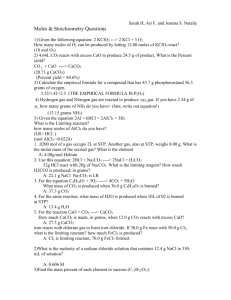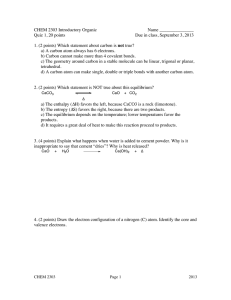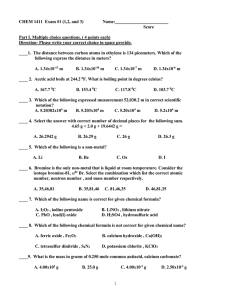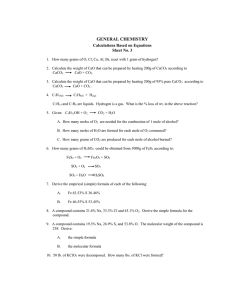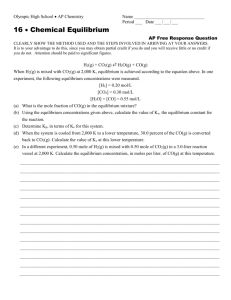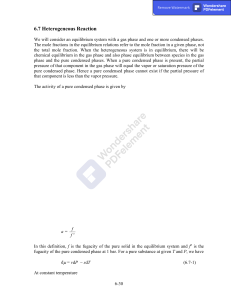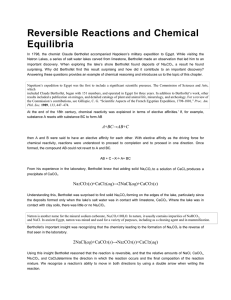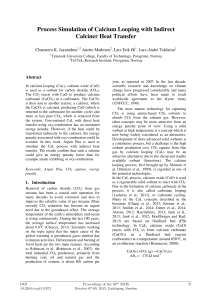Chapter 19 Chemical Thermodynamics Chemistry, The Central Science
advertisement
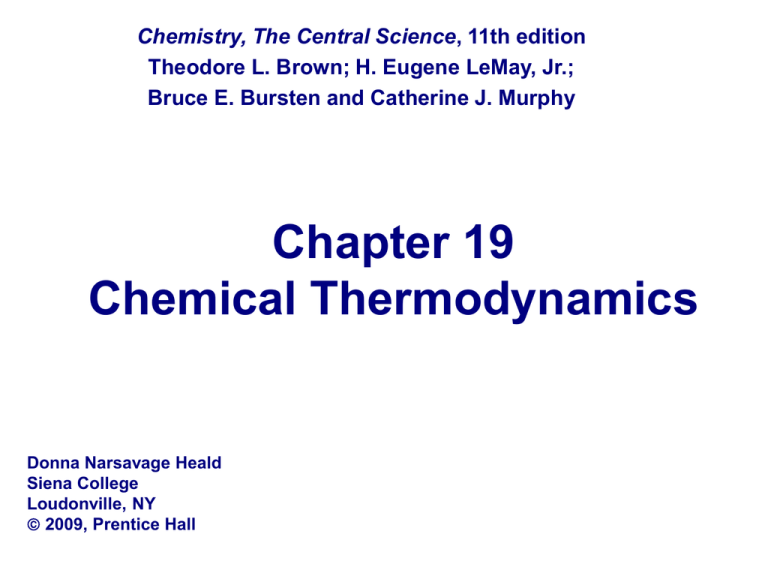
Chemistry, The Central Science, 11th edition Theodore L. Brown; H. Eugene LeMay, Jr.; Bruce E. Bursten and Catherine J. Murphy Chapter 19 Chemical Thermodynamics Donna Narsavage Heald Siena College Loudonville, NY 2009, Prentice Hall Which substance will have the highest entropy? 1. 2. 3. 4. 5. Butane Isobutane Pentane Isopentane Neopentane Which substance will have the highest entropy? 1. 2. 3. 4. 5. Butane Isobutane Pentane Isopentane Neopentane Which process will have a negative DS? 1. Dissolving a substance 2. Melting 3. Falling leaves 4. Oxidation of a metal 5. Decomposition of water into H2 and O2 Which process will have a negative DS? 1. Dissolving a substance 2. Melting 3. Falling leaves 4. Oxidation of a metal 5. Decomposition of water into H2 and O2 A reaction will be spontaneous at lower temperatures when the sign of DH and DS is A reaction will be spontaneous at lower temperatures when the sign of DH and DS is If the temperature of the reaction is decreased, what is the effect on the equilibrium constant and DG? N2(g) 1. 2. 3. 4. 5. + 3 H2(g) K increases; DG increases. K decreases; DG decreases. K increases; DG decreases. K decreases; DG increases. Temperature does not affect equilibrium or DG. 2 NH3(g) DH° = –92.4 kJ/mol If the temperature of the reaction is decreased, what is the effect on the equilibrium constant and DG? N2(g) 1. 2. 3. 4. 5. + 3 H2(g) K increases; DG increases. K decreases; DG decreases. K increases; DG decreases. K decreases; DG increases. Temperature does not affect equilibrium or DG. 2 NH3(g) DH° = –92.4 kJ/mol Upon heating, limestone (CaCO3) decomposes to CaO and CO2. Speculate on the sign of DH and DS for this process. CaCO3(s) CaO(s) + CO2(g) Upon heating, limestone (CaCO3) decomposes to CaO and CO2. Speculate on the sign of DH and DS for this process. CaCO3(s) CaO(s) + CO2(g)
